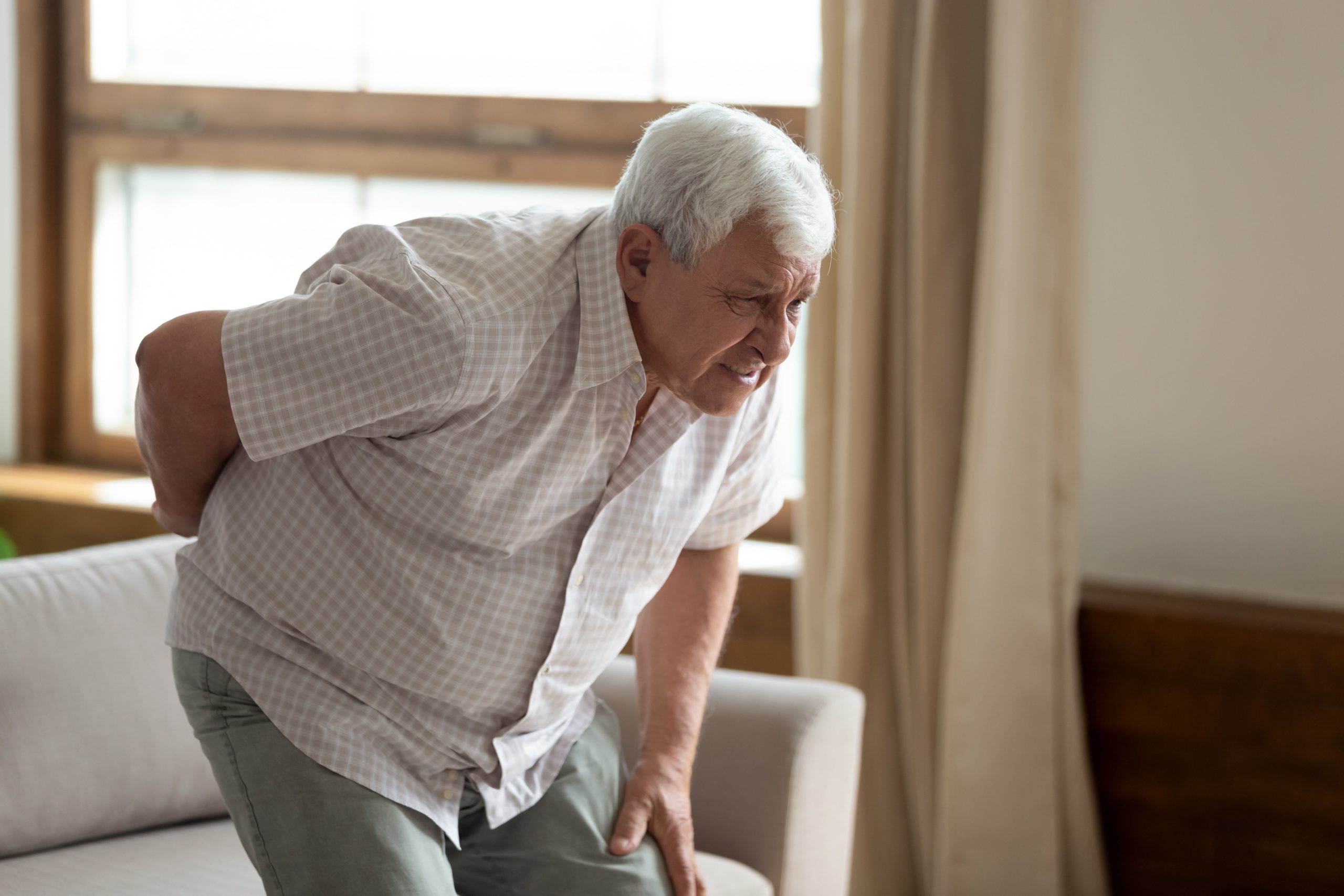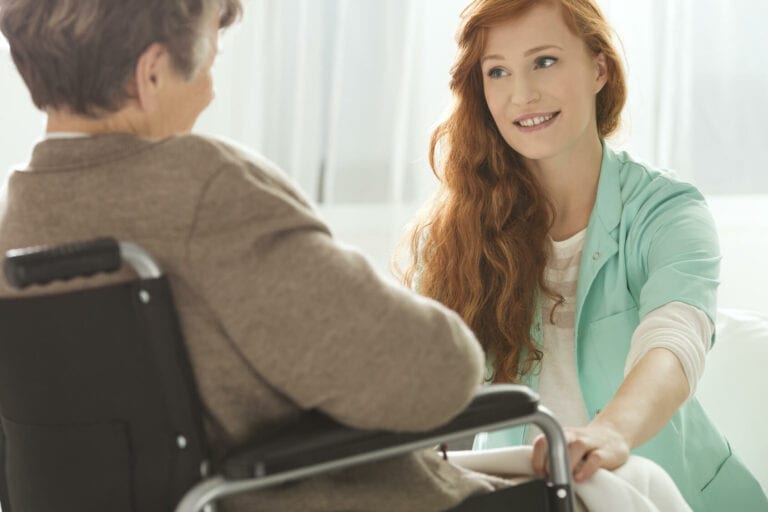As we age, our height and gait alter, resulting in increased pressure on our spines. A person loses around half an inch of height per decade from their peak height. After age 70, the loss of height gets more significant. Alterations in height and posture might cause backache. Sudden middle back pain in the elderly.
What is sudden middle back pain?
The thoracic spine is the back part between the bottom of the rib cage and the neck. It is where sudden middle back pain starts. This region contains twelve vertebrae, designated as T1 through T12. Disks lie between them. The spinal column provides spinal cord protection. The spinal cord is a long group of nerves that helps the brain and the rest of the body talk to each other. The spinal column safeguards the spinal cord. The spinal cord is a lengthy bundle of nerves that connects the brain to the rest of the body.
What are the symptoms of sudden middle back pain in the elderly?
Many things can cause middle back pain. The symptoms you feel will depend on what is making you feel bad. Middle back pain symptoms include:
- muscular aches
- dull pain
- a scorching sensation
- a sharp or stabbing pain
- muscle tension or rigidity
What are the causes of sudden middle back pain?
There are several causes of sudden middle back pain. The following are the major causes of middle back pain:
1. Poor posture
Repetitive pressure on the spine might result in mid-back pain. In some circumstances, this pressure might be caused by improper posture. When you slouch, the muscles and ligaments in your back must exert considerable effort to maintain your balance. These muscles can become achy and cause middle back discomfort if they are overworked.
2. Obesity
A meta-analysis of 95 studies on the relationship between weight and lower back pain revealed a link between obesity and back pain. Weight gain raises the likelihood of back pain.
3. Muscle sprain or strain
Ligament tears or stretches constitute sprains. Strains are tears or elongation of muscles and tendons. Lifting heavy objects frequently, especially without good technique, can quickly lead to back strain or injury. Injuries such as sprains and strains can result from uncomfortable or unexpected movement.
4. Fall or other injuries
The middle back is less susceptible to damage than the neck and lower back (lower back). It is due to its greater structure and rigidity. However, it is still possible to sustain a middle back injury. It is the most common cause of these injuries.
- A severe fall, such as down a flight of stairs or from a great height
- An automobile accident
- Blunt force trauma
- A sports accident
Anyone can sustain a thoracic spine injury, but elderly individuals are at a greater risk. If you have back pain because of this, you should see a doctor right away.
5. Herniated disk
A herniated disk is when the gel-like centre of a disk in your back presses against the ring of cartilage on the outside, putting pressure on a nerve. Herniated disks are also called slipping
disks or disks that have burst.
This nerve compression can produce pain, tingling, or numbness in the middle back and legs, where the affected nerve travels.
6. Osteoarthritis
Osteoarthritis (OA) is a degenerative disorder of the joints. It occurs when the cartilage that covers your joints deteriorates, causing the bones to rub against one another.CDC says 30 million U.S. adults have OA. It is the main reason adults in the United States can’t work.
7. Aging
Age increases the likelihood that a person will have back discomfort. As the American Association of Retired Persons reported, back discomfort is most prevalent in people between 30 and 50 years old. The aging process causes natural wear and tear on the body, including thinner bones, a decrease in muscle mass, and a loss of fluid between spinal joints. These factors can all contribute to back pain.
8. Fractures
Fractures of the vertebrae frequently result from trauma, such as a fall, automobile accident, or sports injury. Fractures are also more frequent in individuals with low bone density, such as osteoarthritis (OA).
Fractures can produce intense mid-back pain that worsens with movement. If you also have urinary incontinence, tingling, or numbness, your fracture may be affecting your spinal cord.
Fractures and broken bones can be extremely severe injuries. They frequently necessitate prompt treatment. Possible treatment options include using a brace, physical therapy, and surgery.
How does the pain management doctor diagnose sudden middle back pain?
You must see a pain management doctor to diagnose the sudden middle back pain. Your doctor may use the following to aid in diagnosis:
Physical exam
During a physical examination, your doctor will evaluate your spine, head, pelvis, belly, arms, and legs. During this examination, emergency personnel may also place a collar around your neck to brace your spine if you were involved in an accident.
Testing
Your pain management doctor will likely conduct tests to assist in making a diagnosis. These include imaging and neurological examinations.
A neurological examination will assess the health of the brain and spinal cord. During this examination, your doctor may ask you to wriggle your toes or fingers. It may reveal the condition of the spinal cord and nerve terminals.
Imaging tests produce images of the internal organs. They may detect fractures, bone deterioration, or additional reasons for midback pain. Tests may consist of:
These imaging tests will enable your physician to detect damage to your spine and select the most effective treatment.
Treatment for sudden middle back pain
The treatment for middle back pain depends on the underlying cause of the pain. Most patients initially seek to address their back pain at home utilizing simple, inexpensive, and noninvasive therapy options. You may require medical therapy or surgery if home cures do not alleviate your symptoms.
Home remedies
There are several at-home treatments for moderate back pain:
- Frost, the area, then apply heat. It is one of the most popular techniques for providing immediate relief.
- To reduce pain and swelling, consider taking over-the-counter analgesics such as ibuprofen (Advil) and naproxen (Aleve).
- Yoga and other stretching and strengthening routines for the back.
Medical treatments by pain management physician
If your back discomfort lasts longer than 72 hours and home therapies are ineffective, consult a pain management physician. he may suggest:
- Physical therapy
- prescribed analgesics and muscle relaxants
- chiropractic care
A pain management physician can help to relieve sudden middle back pain
Home Care Near Me. Let’s Get Started!
Get Immediate Help with Information, Costs & Payment Options.







